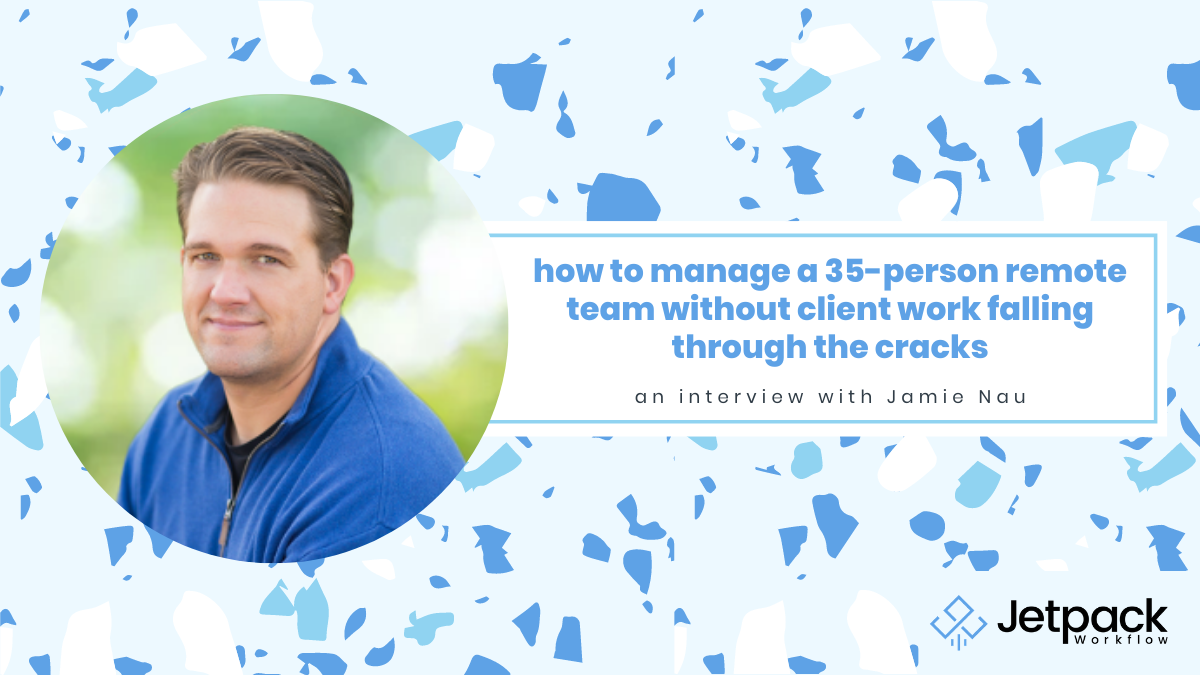How to Manage a 35-person Remote Team Without Client Work Falling Through the Cracks

A growth in business comes with certain challenges. One that stumps a lot of firm owners is growing the number of people on staff. Each person hired puts a little more distance between you and the clients. How do you maintain the quality levels that got you where you are and keep all of your clients happy?
On this week’s Growing Your Firm podcast, we’re speaking with Jamie Nau. He’s the virtual CFO and director of accounting at Summit CPA Group. In this interview, we’re going to break down how he handles a 30-person remote team. Take a listen and see if you agree with his management style.
Podcast
Summary
- What Summit CPA Does
- Pods of Workers
- How Jamie Structures Meetings
Resources
When You’ve Got a Team This Big…
Summit CPA Group does quite a lot of business. Jamie’s responsibility is managing the virtual CFO group. This group’s focus is creating forecasts to guide companies on what their next steps should be for financial health. To do that, they also have to do standard accounting work to get the data.
Thus, Jamie has to manage accountants, bookkeepers, and CFOs: over thirty people in one group! Plus, he has to stay in touch with clients and make sure they’re getting what they need. How on earth does he juggle it all, especially since the entire team works virtually?
Pods
First, let’s look at the team’s organization chart. He has divided his team into four pods responsible for different batches of clients. Each pod has two CFOs and four accountants dedicated to those clients, plus access to a support team of three bookkeepers per pod.
So that’s nine people per pod. Jamie’s role is to provide support for the pods, whether that’s handling personnel problems or dealing with client emergencies that are beyond the bandwidth of the pods.
Splitting the group into teams this way keeps it more manageable. It’s a little like having four separate small businesses, each with their own book of business. But delegation alone isn’t enough for a team this size. You also need excellent communication, and that means meetings.
Meeting Structure
Since Summit CPA is a virtual office, meetings are the lifeblood of intra-company communication. Yet no one likes to waste time in meetings when they could be earning more money, so Jamie uses several smart tricks to strike the balance.
First, he sets Monday as the major meeting day. Here’s how that day is structured:
Leadership Meeting
Jamie meets with the leaders of the other divisions and the owners of Summit CPA to keep upper management in the loop about what’s going on and to report on KPIs. For Jamie’s group, the KPIs are gross profit and client feedback on how well they like the service they’re getting.
All-Company Meeting
This is less of a meeting and more of a half-hour social time for the entire company to stay connected. They hold these daily. To help conversation, they choose a topic to talk about. Usually it’s something silly, like what’s your favorite breakfast cereal, but the goal is to have a time when everyone can connect with one another.
Internal Leadership Meeting
This is an hour-long meeting with all the senior accountants on his team that touch base with the clients regularly.
They usually spend the first ten minutes of the meeting in silence while the team leaders go through Jetpack Workflow and close all the low-hanging fruit that was forgotten so they can focus on the jobs that truly have an issue. It may be a little awkward, but if you don’t have an accurate viewpoint of the current situation, it makes it hard to have a meeting around it.
Jamie’s target is to have no more than 10% of the work overdue, according to Jetpack Workflow. Most of the time, an overdue job is really an error by someone on the team who hasn’t paid attention to moving it forward or closing the job out. One of Jamie’s goals is to drive this number down to as close to zero as possible by adjusting deadlines appropriately and ensuring that people are marking things as complete.
Goals
Next, they talk about the goals for his division, things like how many clients are in Jetpack Workflow. Usually there are about 5-6 of these. This is just a quick recap of where things are. If there is an issue that needs to be addressed, they table it until later in the meeting.
Announcements
The next part is announcements. Jamie will announce things he learned in the earlier leadership meeting, things like a new hire and who they’ll be working for. Other people will also announce things if necessary, anything that the entire team needs to know.
They follow this with an exercise where they go around the room and announce what their work highlight was last week. This gets ideas flowing and helps the team share best practices. They also announce any issues they have that they want to address later in the meeting. They get added to that tabled list.
By this point, there are about 15 minutes left in the meeting for focused discussion and solution-seeking for the tabled items.
CFO Meeting
This meeting is held at the end of Monday with just the CFOs. It’s a 20 minute meeting that talks about only three topics:
- Problems with overdue financial statements.
- Morale problems with clients.
- Morale and performance problems with people in the division.
Jamie considers it important to have some discussion on these every week, even if things are going well.
Again, if a problem needs to be discussed, it’s tabled until later. The goal is to identify issues for later. In fact, many of these problems aren’t picked up again until Friday. That gives the team time to think about the issue in the back of their minds.
If it’s truly urgent, then Jamie will step in to intervene. An urgent event could be engaging HR for an employee issue or reaching out to a client that’s really unhappy.
Beyond these, Jamie will also have weekly client meetings to talk about comments and issues. The CFOs are free to organize internal meetings for their pods should they wish to have daily huddles or whatever is necessary. But for Jamie, this structure is enough to give him a handle on what’s happening in the business.
Friday
Meetings for solving issues are done on Fridays. Jamie keeps that day as free as possible from client meetings. This serves several purposes:
- If a client meeting is bumped, then Friday is open for rescheduling.
- It gives him time to really hunker down on issues that need to be addressed.
- Having so much time open removes urgency. He and his team can relax and really talk through issues.
The last tip he discusses is that he asks for a rating of the meeting at the end from one to five. Anyone that says it’s under four has to share what went wrong and what could go better. Over time, the group can come to a consensus of what makes a productive meeting.
There are a few other great tidbits in the full podcast above, so take a listen to the whole thing to hear each of them! If you have further questions, you can reach out to Jamie directly at jnau@summitcpa.net.





